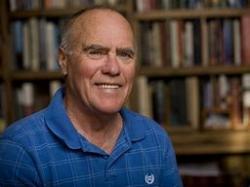The dividing line between “it’s okay and “problematic” is often difficult to locate, especially when a sport legitimatizes a practice, as in running.
Let’s start with a concept and its definition. “A pacemaker or pacesetter, sometimes informally called a “rabbit,” is a runner who leads a middle- or long-distance running event for the first section to ensure a high speed and to avoid excessive tactical racing.”
Like trailblazers who lead the way in any trek, pacers make the trip easier. With their work, anyone who comes after has an easier task. The trail is marked by blazes, a pre-agreed upon pace for a race, or even those strobe lights now used on the inside curb of 400-meter tracks flashing to a set pace.
A runner with a pacer is like a pro golfer who can ride a cart for four days during a major tournament. While still difficult, the task becomes easier.
Pacers are not new in track and field. In 1954, Sir Roger Bannister was “escorted” by Chris Basher and Chris Chattaway in his quest to break the 4-minute mile on the Oxford Track at Iffley Road. Basher set the prescribed pace for half a mile, and then Chattaway took over, pacing Bannister for the 3rd lap before Bannister passed him and set the record. Bannister may not have broken the 4-minute barrier without his training partners leading the way.
Flashing forward to today, during the recent Track and Field World Championships in Budapest, pacers were present for certain races in pursuit of a world record. Soon afterward, in Eugene, Oregon, pacers presented their talents to help a runner establish a new record. And in the recent Berlin Marathon, Tigist Assefa set a new world record for women. She had male pacers who also aided her at water stations so that she would not need to slow to get her own bottle. Even the reigning male world champion, Eliud Kipchoge, claimed his fifth Berlin race as pacers helped him until about the final 10km.
Having another runner–even in a short race like the 400 meters–set a pace makes it easier for someone like Bannister. Having that pacesetter, be it another runner or lights, the racer does not have to think about pace and timing. The task is reduced to “locking on” the pacer and following along.
Pacers reduce the work and risk of miscalculating pace for any runner. Most runners have a tale of “going out too fast” and suffering for that error over many distances. But a professional pacer prevents that–and there are, and have been, professional pacers.
Yes, records are set, and money flows for the racers and shoe companies. However, I see those paced records as tainted.














